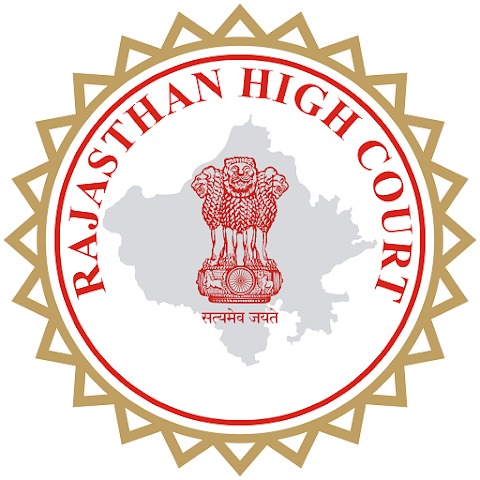History
Alwar state may be said to have been formed as a separate, independent state when Rao Pratap Singh, its founder, first raised his standard over the Alwar Fort on November 25th 1775. During his rule the then districts of Thanagazi, Rajgarh, Malakhera, Ajabgharh, Baldeogarh, Kankwari, Alwar, Ramgarh and Laxmangarh, and areas around Behror and Bansur, were finally integrated to form the State. As the State was being consolidated, naturally, no definite administrative machinery could have come into being.
The next ruler Maharao Raja Bakhtawar Singh(1791-1815) also devoted himself to the work of extension and consolidation of the terriotory of the State. He was successful in integrating the pargannahs of Ismailpur and Mandawar and the talukas of Darbarpur, Rutai, Nimrana, Mandhan, Beejawar and Kakomain the Alwar State. Maharao Raja Bakhtawar Singh rendered valuable services to Lord Lake, during the latter’s campaign against Marathas, in the battle of Laswari, in Alwar territory when the State troopes assisted him in finally breaking the Marathas and Jat powers.
As a result, in 1803, the First Treaty of Offensive and Defensive Alliance was forged between Alwar State and the East India Company. Thus, Alwar was the first princely State in India to enter into Treaty Relations with the East India Company. But in his time also, the State Administration was very imperfect and cases of loot and dacoit, even in broad day light, were not infrequent. The State was borrowing money from outside as its finances were poor and mismanaged. Most of the land revenue was use to pay back the loans and, at times, the farmeres were put to hardship.
Maharao Raja Viney Singh (1815-1857) suppressed the social anarchy and was to a great extent, successful instabilising the general conditions in the State. It was in his time that the Alwar State administration began to take shape. According to the Imperial Gazetter of India,” The Government had previously been carried on without any system. But with the aid of certain Musalmans introduced from Delhi and appointed ministers in 1838, great changes were made.The land revenue began to be collected in cash instead of kind and civil and criminal courts were established.”
Maharao Raja Viney Singh died in 1857 and was succeeded by his son Sheodan Singh (1857-1874). He was then a boy of twelve. He at once fell under the influence of the Mohammed an Dewans of Delhi. Their proceedings excited an insurrection of the Rajputs in 1858, in which several of the Dews followers were killed and the ministers themselves were expelled from the State. Captain Nixon, the Political agent of Bharatpur, was at once despatched to Alwar who formed a Council of Regency. A Panchayat was formed with three members to administer the State but it could not succeed. Captain Impeycame to Alwar as the next Political Agent in November, 1858. His tenure of that office continued till the end of 1863,
Maharao Raja Sheodan Singh assumed ruling powers on 14th September,1863 and soon after, the agency was abolished. But the administration soon fell back into the hands of old Dewans who still had links with the ruler. In 1870, the disbanding of the Rajput cavalry and the wholesale confiscation of Jagir, grants the extravagance of the chief and his Mohammed ansympathisers, brought about a general uprising of the Rajputs with the result that the British government had again to interfere. Captain Blair, the then Political Agent for the Eastern States tried to bring about reconciliation but failed. Major Cadell was then appointed the Political Agent in 1867 and,with the sanction of the Government of India, a council of Management was formed with the Political Agent as President, the Maharao Raja having a seat in the Board. Personnel of administration was changed and the whole administration was cleaned. A new Department of Engineering was started. Tehsildars were entrusted with more civil and criminal powers; the Kotwali was established for the security of the city.
An independent department called Appeals was brought into being for hearing appeals against decisions of lower courts. District and Sessions Court, Alwar was established in 1951 and situated in City Palace Campus ,Mahal Chok Alwar
| Sl No. | Name of Court Complex | Distance From HQ |
|---|---|---|
| 1 | Alwar Court Complex | District HQ |
| 2 | Rajgarh Court Complex | 39KM |
| 3 | Bansur Court Complex | 61KM |
| 4 | Thanagaji Court Complex | 46KM |
| 5 | Behror Court Complex | 60KM |
| 6 | Tijara Court Complex | 53KM |
| 7 | Mundawar Court Complex | 53KM |
| 8 | Laxmangarh Court Complex | 60KM |
| 9 | Kishangarh Bass Court Complex | 35KM |
| 10 | Ramgarh Court Complex | 27KM |
| 11 | Kathumar Court Complex | 66KM |
| 12 | Bhiwadi Court Complex | 92KM |
| 13 | Neemrana Court Complex | 72KM |
| 14 | Kotkasim Court Complex | 56KM |
| 15 | Malakheda Court Complex | 18KM |
| 16 | JJB Court Complex | 10KM |
| 17 | Kherli Mandi Court Complex | 76KM |
| 18 | Raini Court Complex | 53KM |
| 19 | Govindgarh Court Complex | 50KM |



